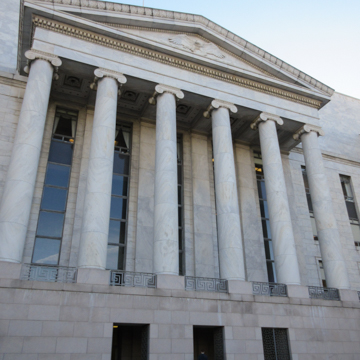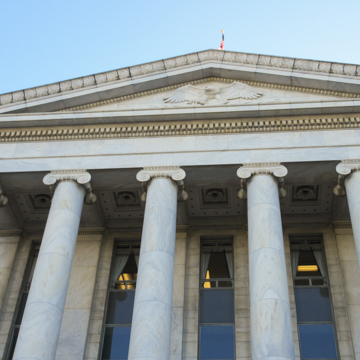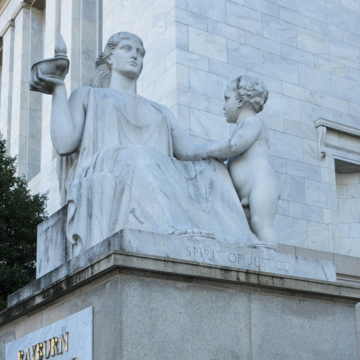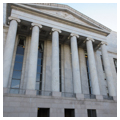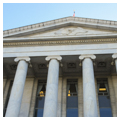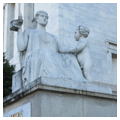Perhaps Washington's most maligned public building, the Rayburn Building covers eight former Capitol Hill residential blocks with four massive rectangular office wings separated by courtyards that open to the east, south, and west. The difficulties of designing in a historical style whose time has past by those untrained or ill-trained in its basic principles is manifested most obviously in the
You are here
Rayburn House Office Building
1962–1965, Harbeson, Hough, Livingston, and Larson. Independence Ave. between South Capitol St. and First St. SW
If SAH Archipedia has been useful to you, please consider supporting it.
SAH Archipedia tells the story of the United States through its buildings, landscapes, and cities. This freely available resource empowers the public with authoritative knowledge that deepens their understanding and appreciation of the built environment. But the Society of Architectural Historians, which created SAH Archipedia with University of Virginia Press, needs your support to maintain the high-caliber research, writing, photography, cartography, editing, design, and programming that make SAH Archipedia a trusted online resource available to all who value the history of place, heritage tourism, and learning.

